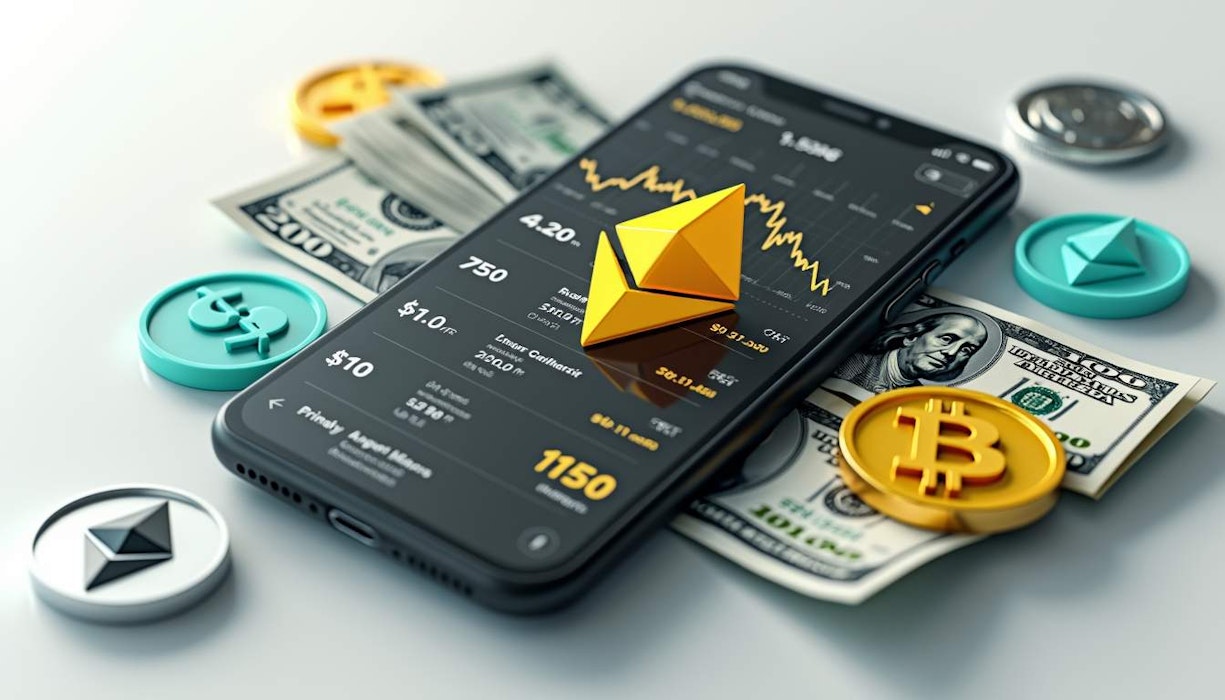The Fed's monetary policy is in flux, and it's shaking things up for the crypto market. With inflation taking its own twists and turns, the Fed's next move could shift the game for crypto trading. Let's chat about how this all connects to digital currency exchanges and what it might mean for us investors.
A Quick Dive into Crypto and the Economy
Cryptocurrencies have carved out a niche in the global financial scene, standing as an alternative to traditional fiat currencies and banking. Digital currency exchanges have mushroomed, making crypto trading in the US more accessible. But the economic backdrop, heavily influenced by the Federal Reserve, is a critical player in the crypto trading us market.
The Fed's Position and Its Ripple Effect on Crypto Trading in the US
Hawkish Times
The Fed's current hawkish vibe is rooted in its monetary policy objectives aimed at controlling inflation and driving economic growth. Recently, it slashed the federal funds rate by 0.25%. But hold on, they also hinted at a slower rate-cutting pace in 2025. This was based on brighter GDP growth and lower unemployment forecasts, along with some higher inflation projections.
Michael Gapen from Morgan Stanley chimed in, saying that while the Fed's stance is hawkish now, a dovish shift isn't entirely off the table soon. He spoke right after the latest Personal Consumption Expenditures (PCE) report, which might have given him a bit of insight into the Fed's future moves.
The Dovish Possibility
Gapen looked at the November PCE report, which showed a slight uptick of 0.1%, as a good sign. The drop in housing-related inflation was crucial, suggesting we're tackling high inflation's root causes. But goods prices, especially in the auto sector, are still hanging around due to storm disruptions.
According to Gapen, "The data shows that inflation is falling", but with a caveat that we'd need more proof before the Fed would think about cutting interest rates as early as March. He expects December's inflation numbers to follow a similar pattern, with a rise between 0.17% and 0.2%. Despite these changes, he sees a clear disinflation trend that could influence the Fed's decisions.
The Crypto Trading Fallout
The Fed's stance will have major implications for crypto trading. A hawkish stance usually makes riskier assets, like cryptocurrencies, less appealing to investors. On the flip side, a dovish approach could make cryptos more attractive as alternative investments.
Inflation Trends and Digital Currency Exchanges
Watching Inflation Trends
Inflation trends are essential in shaping the crypto market. The U.S. Consumer Price Index (CPI) recently hit a 40-year high, showcasing ongoing inflation pressures. This has led to heightened volatility in the cryptocurrency market, as investors scramble for inflation hedges.
Market Reactions
Bitcoin has had a mixed bag of reactions to inflation data. It's often marketed as an inflation hedge due to its capped supply, yet its price movements have been swayed by the broader economic landscape. The recent hawkish signals from the Fed caused Bitcoin to tumble below $100,000 and dip under $93,000, underscoring how sensitive the crypto market is to monetary policy changes.
The Role of Digital Currency Exchanges in Economic Stability
Embracing Blockchain for Payments
Blockchain technology facilitates direct transactions without the usual middlemen, like correspondent banks, that bog down traditional cross-border payment systems. This significantly reduces costs and speeds up processing times. For instance, blockchain transactions can settle in minutes instead of dragging on for days or weeks, slashing costs by up to 80%.
Forming Partnerships for Seamless Transactions
Digital currency exchanges can partner with blockchain firms to create smooth cross-border transactions. A case in point is Ripple's partnership with Mercado Bitcoin in Brazil, allowing businesses to use Ripple's managed end-to-end payments solution. This enables businesses to make cross-border payments 24/7 in just minutes and access over 80 payout markets with a single integration.
Transparency and Efficiency Boosts
Blockchain exchanges offer transparency and efficiency thanks to distributed ledger technology (DLT) and smart contracts. These innovations automate recordkeeping and ensure secure, traceable transactions, reducing cross-border transaction failures and building customer trust.
Stablecoins to Curb Volatility
Employing stablecoins, pegged to fiat currencies, can help curb the volatility that often accompanies cryptocurrencies. This stability makes cross-border payments more predictable. PayPal's Xoom service, for example, uses PayPal’s USD stablecoin for cross-border transactions, showcasing the wider acceptance of stablecoin payments.
Streamlined Onboarding for Businesses
Platforms like Ripple Payments have simplified onboarding, enabling businesses to swiftly adopt blockchain-based payment solutions with minimal friction. This accelerates their market entry and enhances operational efficiency.
Navigating Regulations and Security
To thrive, businesses must navigate the regulatory landscape in Latin America. Solutions from companies like Paysafe ensure compliance while providing advanced security features to protect against fraud. This establishes the trust needed for businesses to flourish in the region's crypto ecosystem.
Summary
The Federal Reserve's shifting stance on monetary policy is a key factor for the cryptocurrency market. As the Fed swings between hawkish and dovish positions, the implications for crypto trading in the US are far-reaching. Inflation trends and economic conditions will continue to shape the allure of cryptocurrencies as alternative investments.
Digital currency exchanges are crucial in maintaining economic stability, especially in hyperinflationary economies. By harnessing blockchain technology, stablecoins, and integrated solutions, these exchanges offer cost-effective, efficient, and secure cross-border payment options.
Investors and businesses need to keep a close watch on the Fed's policy changes and their potential impact on the cryptocurrency market. Understanding these dynamics is essential for navigating the evolving economic landscape and making informed decisions in the crypto market.
